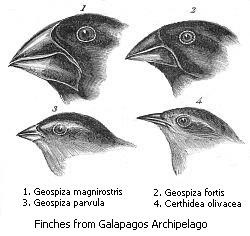Discover our exclusive collection
Over 3,000 historic giclee prints, 16 artists and 40 complete sets
Any questions?
We are more than happy to help. Just send us a message, and we will be in touch
Over his lifetime, John Gould (1804-1881) created over 40 volumes of work, with over 3,000 colored plates, providing amazing insights into previously undiscovered species.
Although Gould was not the artist of the illustrations within his collections, it was Gould’s vision, dedication and supervision that led to the production of so many important works. During his career he carefully documented birds and habitats in a range of environments from Australia to the Himalaya’s.
Born in Lyme Regis, West Dorset, Gould followed in his father’s footsteps to become a gardener. He secured a position as foreman in the Royal Gardens of Windsor in 1818.
Following his training at Windsor from 1818 to 1824, Gould later became a gardener at Ripley Castle in Yorkshire. Alongside his garden duties, Gould developed a passion for taxidermy – establishing his own taxidermist business in London.
Perhaps his most notable commission was for the stuffing of a pet giraffe for King George IV in 1826.
In 1827, Gould’s expertise gained him a role at the Zoological Society of London as the museum’s first curator and preserver. His position gave Gould access to several of Europe’s leading naturalists and he was often among the first to see the exotic new collections of birds given to the society. In his lifetime, he wrote over300 scientific articles and identified 377 new species of birds.
Following the arrival of a collection of exotic bird skins from the Himalayas in 1830, Gould began the first of his monograph collections.
The book A Century of Birds from the Himalaya Mountains, gained instant popularity and Gould followed this success with collections on the birds of Europe, Asia, Australia and New Guinea. He also created volumes dedicated to toucans, hummingbirds, birds-of-paradise and in a departure from feathered creatures; kangaroos.
Gould was aspecially well known for his influence on Australian ornithology. And the publication of The Birds of Australia made him a leading taxonometrist in Australia.
Gould did not always create the artwork for his collections himself. His wife Elizabeth often prepared the initial sketches and then transferred them to stone engravings. She also completed the initial hand coloring. Using this method of stone engravings, Gould was able to produce an enormous amount of illustrations. Sadly, Elizabeth passed away at young age, leaving Gould with seven children.
One of Gould’s main talents was his business brain and ability to organize a group of artists and craftsmen to obtain the required results. He worked with several established artist: Edward Lear, Joseph Wolf, Henry Richter and Joseph Hart.

A notable point in Gould’s career came when he provided his expertise and guidance to Charles Darwin. In 1837, having returned from his second voyage aboard HMS Beagle, Darwin presented the mammal and bird specimens collected during his trip to the Zoological Society of London.
Gould was given the responsibility of identifying the birds and he identified 13 new finch species. These finches would later become known as ‘Darwin’s finches’. Gould’s knowledge provided vital information that helped Darwin develop his theory of evolutionand natural selection. Darwin argued that populations of similar species isolated from each other can continue to evolve separately. In that time, this was a controversial theory, and Gould didn’t want to be associated with it.
Over his lifetime, Gould created over 40 volumes of work, with over 3,000 colored plates, providing amazing insights into previously undiscovered species. He continued to work up until his death in 1881.
Over 3,000 historic giclee prints, 16 artists and 40 complete sets
We are more than happy to help. Just send us a message, and we will be in touch
Chambre of Commerce: 75 23 82 84
VAT: NL860202604B01
To subscribe to our newsletter and be updated about new and interesting additions to our collection, please enter your email address below.

© Heritage Prints 1992-2022 | All rights reserved